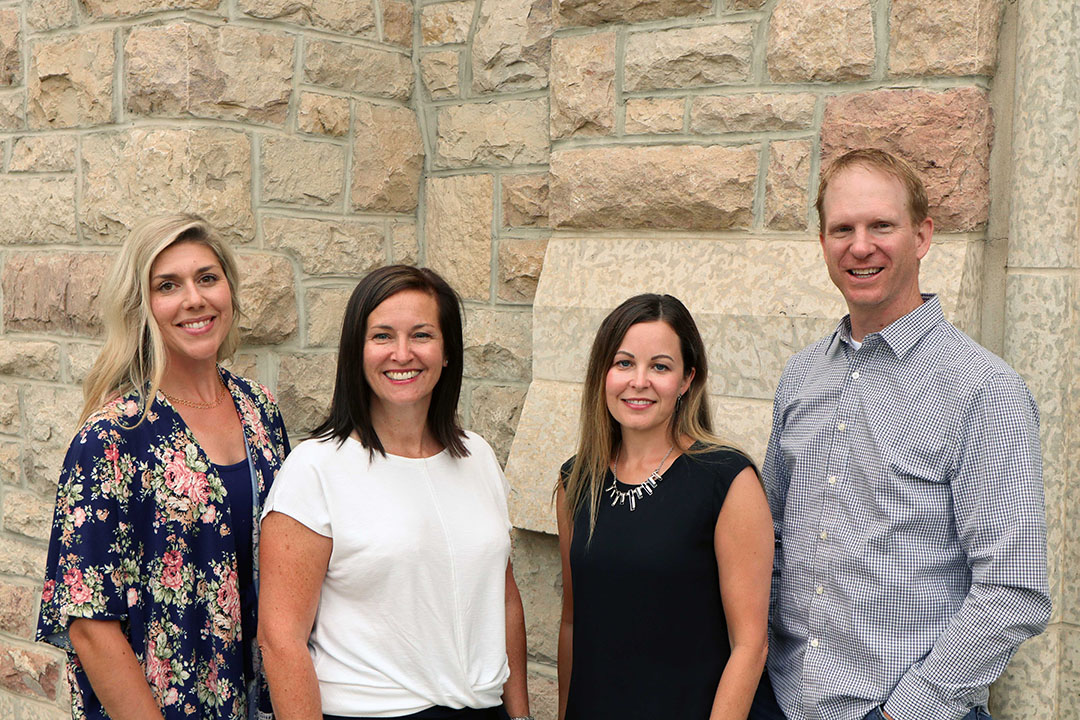
USask collaboration creates free cannabis education toolkit
REACH program consists of new curriculum resources for Saskatchewan classrooms to help youth make healthy, informed decisions about cannabis use.
By Collin SemenoffREACH program consists of new curriculum resources for Saskatchewan classrooms to help youth make healthy, informed decisions about cannabis use.
A toolkit consisting of educational videos and materials about cannabis use has been developed by University of Saskatchewan (USask) health science collaborators and made available by the Ministry of Education for use in schools throughout the province.
REACH (Real Education about Cannabis and Health) is a free classroom resource resulting from a multidisciplinary collaboration between the USask College of Nursing, the College of Pharmacy and Nutrition, and researchers from the Cannabinoid Research Initiative of Saskatchewan (CRIS).
“Across Saskatchewan, school curricula have historically covered cannabis use in conjunction with illegal drugs,” said Patricia King, a registered nurse and instructor in the College of Nursing. “Now that cannabis is no longer illegal for adults and is readily accessible in our communities, the previous message of ‘just say no’ may not be relevant.”
King is one of several people recently involved in the development of cannabis education resources targeted toward youth in Grades 7 and 9.
Citing an urgent need to provide more cannabis education for school-aged children, King said that youth between the ages of 15 and 24 have a rate of cannabis use that is twice that of adults. This is of particular concern when one considers the fact that developing brains are particularly vulnerable to cannabis use.
The REACH curriculum is the culmination of a partnership between College of Nursing colleagues King and registered nurse Jenn Klemmer, and Drs. Holly Mansell (PharmD) and Kerry Mansell (PharmD) from the College of Pharmacy and Nutrition. The Mansells are both members of CRIS who helped support the initiative, with funding also provided through a grant from the Saskatchewan Health Research Foundation (SHRF).
By leveraging College of Nursing relationships with Saskatoon schools made possible by the Safe School Health Improvement Project (Safe SHIP) and the School Health Initiative with Nursing Education (SHINE), 12 nursing students and one pharmacy student were able to engage with local youth while fulfilling clinical hours for their university studies.
“Partnering with Safe SHIP and SHINE provided a unique opportunity for our pharmacy student to work within the schools and collaborate with other nursing students. It was a great example of interprofessional collaboration—something we really try to encourage within the Health Sciences,” said Holly Mansell.
The scope of the clinical partnership involved youth engagement, meaningful interaction, health education, and health promotion around cannabis use in youth.
“Since late 2018, we’ve collaborated and worked closely with youth, health-care providers, educators, researchers, and other stakeholders to create cannabis education resources which are relevant and evidence-based,” said King. “We believe these resources can have a profound impact on decision making for youth.”
The REACH toolkit includes lesson plans, hands-on learning activities, and videos as well as supplemental resources to help educators increase their own knowledge about cannabis and become confident in knowledge translation. REACH also includes lessons that employ the teach-back strategy to foster student comprehension and consideration of future health behaviours.
REACH curriculum resources, including teaching-learning videos for middle and high school students, are freely available to Saskatchewan teachers. They have been posted in the Other Useful Materials sections of the Health Education 7 and Health Education 9 resource lists on the Saskatchewan Ministry of Education curriculum website.

